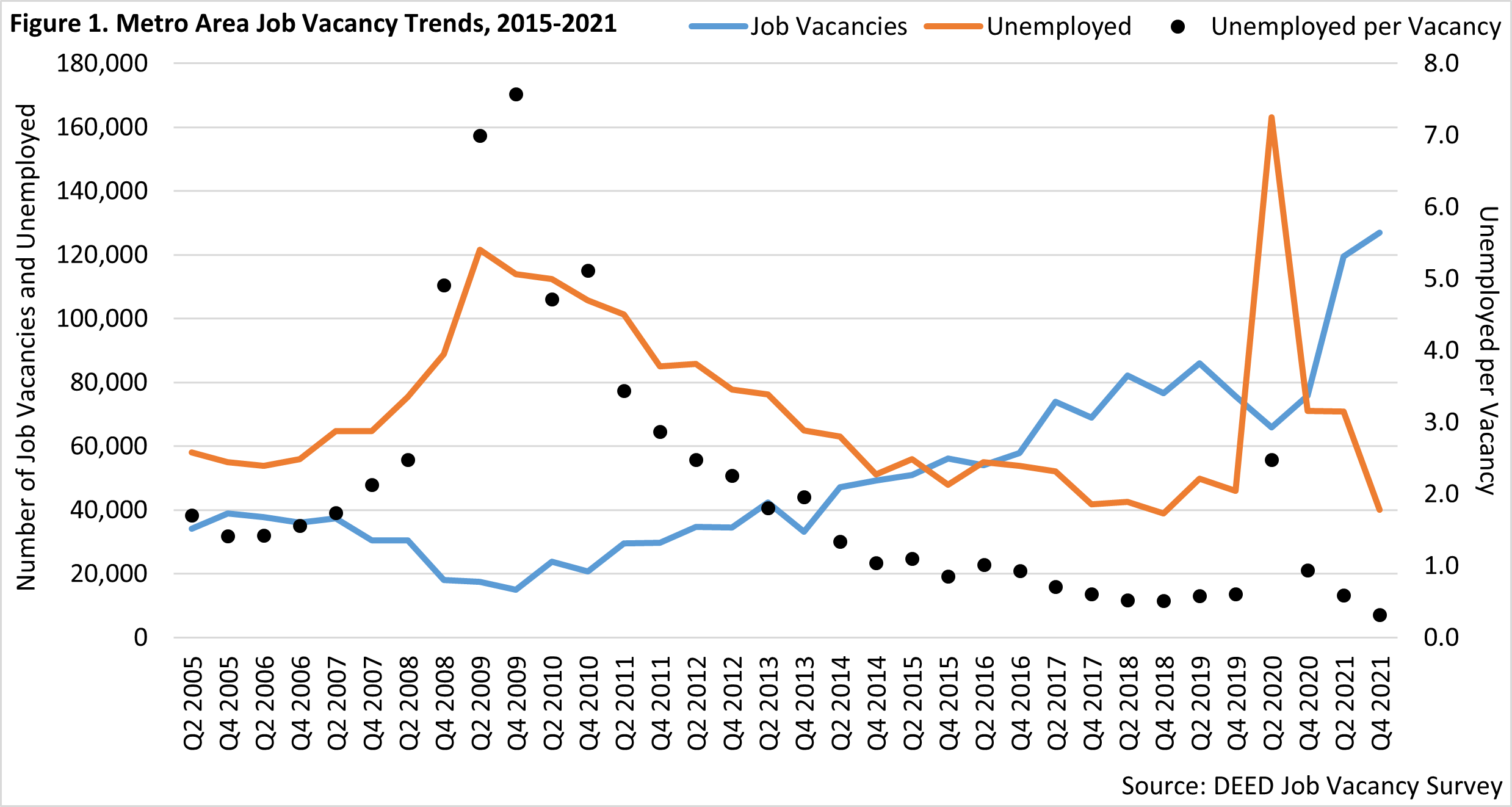 The Minneapolis-St. Paul metropolitan area is a national leader in finance, advanced manufacturing, agriculture and retailing.
The Minneapolis-St. Paul metropolitan area is a national leader in finance, advanced manufacturing, agriculture and retailing.
Medical devices, electronics and processed foods are strong suits recognized globally.
Want the freshest data delivered by email? Subscribe to our regional newsletters.
7/7/2022 9:00:00 AM
Tim O'Neill
Recently the Minnesota Department of Employment and Economic Development (DEED) released updated job vacancy data with its Job Vacancy Survey (JVS) data tool. According to this data, job openings across the state climbed to a record high in the fourth quarter 2021 - nearly 214,100 job vacancies. Similarly, the Seven-County Metro Area hit a new record high of over 126,900 job vacancies.
There were 6.2% more job vacancies in the Metro Area during the fourth quarter of 2021 than the previous record, set during the second quarter of 2021. This was equivalent to about 7,400 additional job vacancies. More eye-opening is the growth in demand over-the-year. Between the fourth quarters of 2020 and 2021, job vacancies in the Metro Area spiked by 67.6%. This was equivalent to about 51,200 additional job vacancies. Clearly, there is a growing demand for workers in the region.
While job vacancies climb to record highs, unemployment in the Metro Area continues to sink to record lows. Over the course of 2021, the Metro Area's unemployment rate dropped from 4.6% to 2.3%. This rate has continued to drop through the spring months of 2022, hitting 1.4% in April 2022.
During the fourth quarter of 2021, when the number of job vacancies in the Metro Area topped out at nearly 127,000, the number of unemployed persons equaled about 40,100. Comparing these two figures, there were approximately 0.3 unemployed persons per job vacancy in the region during the fourth quarter of 2021 (Figure 1). With such a low ratio of unemployed persons to job vacancies, employers across the region will need to come up with new and creative solutions for filling worker demand. Among other options, this includes targeting populations in the region with higher employment barriers and disparities.

Overall, the Seven-County Metro Area accounted for three-in-five (59.3%) of Minnesota's total job vacancies during the fourth quarter of 2021. Zooming in upon the 20 major industry sectors, the Metro Area accounted for nearly nine-in-ten statewide job vacancies in Professional, Scientific, and Technical Services (89.9%); Real Estate, Rental, and Leasing (89.7%); and Management of Companies (85.8%). The region also accounted for a high share of the state's total job vacancies in Administrative and Support Services (78.4%), Finance & Insurance (75.2%), Other Services (72.8%), Information (67.8%), and Accommodation and Food Services (63.7%). The region had smaller shares of the state's total job vacancies in Agriculture (4.2%); Public Administration (28.4%); Construction (37.3%); Arts, Entertainment, and Recreation (41.9%); and Transportation and Warehousing (45.9%).
Those specific occupations in the Metro Area with the most job vacancies include:
Check out DEED's Job Vacancy Survey online to learn more about job vacancies in Minnesota and its regions by industry, occupation, characteristics, and trends over time.
Contact Tim O'Neill, Labor Market Analyst.